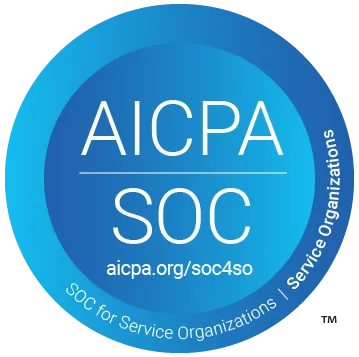Top 13 Best Practices to Make Software QA Testing More Efficient

A successful software satisfies your business’s needs and end users’ expectations. If your consumers are disappointed by your product, you cannot earn their trust and loyalty. In fact, one study shows that 90 percent of users would abandon an app due to poor performance.
This article shows you the 13 best software QA testing practices you should know about product development. By prioritizing these measures, you can be sure that your testing process will deliver nothing short of high-quality software!
What Is QA in Software Testing?
QA in software testing refers to the process of verifying or confirming that your software is working as expected and free from defects while meeting the required standards. As such, it involves steps taken to validate the quality of your application. Also, it helps to prevent, detect, and correct errors to improve overall customer satisfaction.
To make things clearer, here are common questions asked while carrying out QA software testing:
- Is the software working as expected?
- Is it responding quickly and efficiently?
- Is it user-friendly and accessible?
- Is it secure enough to protect user data and prevent unauthorized access?
- Is it compatible with different environments and platforms?
Is There Any Difference Between QA and Software Testing?
Yes, there is. In simple terms, QA is like a universal concept that describes every aspect of ensuring quality during the software development process, while software testing is a subset of QA. Nonetheless, these two processes differ in their approach, scope, and objectives.
QA focuses on preventing errors in a product and ensuring quality by putting the necessary processes in place. It’s a proactive and holistic procedure for avoiding potential issues in the final product.
On the other hand, software testing is done to identify errors or defects after software is developed. It involves executing tests to find bugs and reporting them to ensure the final product meets the users’ expectations.
Join the QA Revolution
Sign up for the latest AI and QA technology updates!
Work Email*
I want to subscribe to*
- Product Updates
- News and Resources
What Are the Types of Software QA Testing?
There are many ways QA testing is done, and we’ll examine the top five below:
1. Unit Testing
In unit testing, individual software units are tested separately to ensure each part works correctly in isolation. Developers usually perform this type of testing to confirm whether their codes are working as expected. Because it is done at the ground level, unit testing helps to identify and fix errors quickly.
2. Integration Testing
Integration testing involves bringing individual units of a product together to see if they work well as a whole. It helps the QA software tester to detect whether a system’s components meet the functional standards or requirements.
3. System Testing
Software QA testers perform system testing to evaluate how the different parts of an integrated system interact. This type of testing checks for metrics like software functionality, performance, and security. It also ensures that every kind of user input gives the expected output.
4. Regression Testing
Regression testing ensures the system remains functional even after modifications like software enhancements, bug fixes, and configuration changes are done. By carrying out this test, you ensure that recent additions can’t introduce new bugs or affect the smooth running of your application.
5. User Acceptance Testing
This is typically the last test done on a product before the final release. It is done to verify that the developed software can handle real-life situations and would be accepted by users. In practice, this process replicates user behavior to see how the software or system would react.
13 Best Practices in Software QA Testing
Here are our top 13 best practices in software QA testing that you should adopt today:
1. Set Your Testing Goals
If you don’t know the function your product ought to deliver, your testing efforts will likely be directionless. So, you need to assess your software’s goal first, and then set your testing goals to align with the same.
2. Ensure Your Test Plan Has Measurable Objectives
Your test plan is the document that highlights the steps you will take to test the system. Creating a test plan with measurable objectives and a timeline allocated to each step helps you monitor whether you are making tangible progress.
3. Have a Clear Workflow
With a well-designed workflow, your QA software tester can easily carry out quality assurance checks.
For example, you might want to start with creating your test plan, followed by functional testing, and then regression testing. A clear workflow generally helps to reduce unnecessary delays in the software’s testing and development process.
Join the QA Revolution
Sign up for the latest AI and QA technology updates!
Work Email*
I want to subscribe to*
- Product Updates
- News and Resources
4. Setup Your Testing Environment
Ensure that the conditions of your testing environment are set up to guarantee consistent and accurate results. Your testing software and QA testing tools should simulate real-world situations so you can identify problems that your product might have.
5. Ensure Compliance With Industry Standards
Depending on your software’s industry and jurisdiction, your product must conform to certain rules, regulations, and standards. By ensuring compliance, you’ll avoid unnecessary fines and punishments that can hurt the trust of your clients.
6. Ensure Your Testing Environment is Secure
A safe testing environment would guard against issues such as malicious attacks and data loss. It also ensures that only authorized persons can access the testing process and data. As such, you can stay confident that the test results of your released products are of high integrity.
7. Combine Both Automated and Manual Testing
Combining both testing methods helps you improve your product quality, as it will help you ensure comprehensive test coverage. Automated testing makes it easy to manage repetitive tasks, while manual testing is important for testing procedures where human intuition is indispensable. However, AI seems to be doing a good job at streamlining testing and reducing human involvement.
8. Carry Out Risk-based Testing
With this type of testing, you can identify and prioritize the most harmful risks that can affect your product’s performance. Your QA team can then address these issues earlier enough before they cause significant problems.
9. Conduct Frequent Regression Testing
Regression testing should be done after every update on the software. Regression testing ensures that new features added to your software do not affect its existing stability, helping your software become more scalable.
10. Use Shift Left Testing
Under shift left testing, the testing process begins early on in the systems development life cycle (SDLC). As such, bugs can be identified and eliminated early on in the project, which can help you save the cost of discovering a bug after releasing your application.
11. Be Open to Negative Testing
Negative testing simply involves testing for weaknesses. And while it might be challenging, it helps you identify issues before they become serious problems. You can introduce invalid inputs to your software and see how well it handles the error. Doing this makes your product’s functionality resilient and robust, especially in unforeseen circumstances.
12. Adopt the Two-Tier Test Automation Approach
Adopting a two-tier test automation approach involves the pre-test and the test phases using both unit and end-to-end tests. Unit tests require testing individual components, while end-to-end tests simulate actual user scenarios.
13. Ensure the Work Environment is Conducive for Your QA Team
A supportive and conducive work environment gives your team members the morale to be productive. Ensure their workspace is clean and properly maintained. You should also provide the necessary tools, resources, and technical training they need to thrive. Additionally, go the extra mile to make your employees feel respected, appreciated, and valued.
Join the QA Revolution
Sign up for the latest AI and QA technology updates!
Work Email*
I want to subscribe to*
- Product Updates
- News and Resources
How B2Bs and SaaS Companies Do Software QA Testing Now: The AI Autonomous Advantage
Just as in almost every other sector you can think of today, AI is revolutionizing how QA software testing is done.
With AI-driven test automation platforms, QA testing is done faster and more efficiently. For example, CI/C and regression testing can be completed in under a few hours instead of dragging on for many days using traditional QA methods.
Popular companies like Microsoft, IBM, and Salesforce use AI in their QA testing processes. IBM uses AI for automatic test case generation, Salesforce uses it for faster regression testing, while Microsoft’s Azure DevOps leverages AI for test planning and execution.
The beauty of using AI in QA testing is not just in the time reduction. It’s also seen in how it improves test quality, leading to the release of more reliable software.
Join the QA Revolution
Sign up for the latest AI and QA technology updates!
Work Email*
I want to subscribe to*
- Product Updates
- News and Resources
Conclusion
There you have it! 13 best practices you can introduce into your software QA testing efforts that will help you confidently deliver top-notch, user-friendly, and functional software products. We encourage you to get started with them today.
Nonetheless, if you still need our expert opinion on other measures you can take to build your B2B and SaaS businesses further, feel free to reach out to us at QA.Tech.
QA.tech is an autonomous website testing tool suited to providing comprehensive tests for anything accessible through a website. Our tool leverages artificial intelligence to reduce human involvement and perform website tests in the most intuitive way possible.
We’re always available to provide the help that your company needs to thrive.

Stay in touch for developer articles, AI news, release notes, and behind-the-scenes stories.

